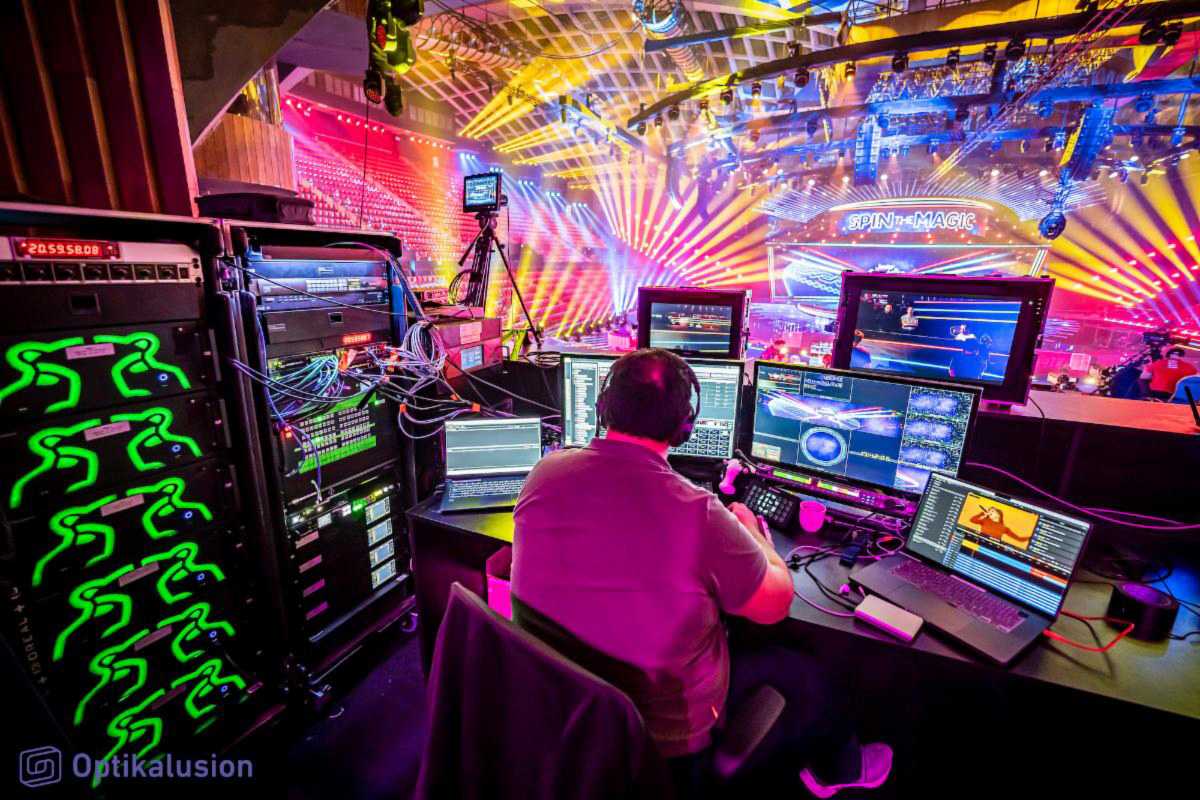Hippotizer ‘spins the magic’ for Junior Eurovision
- Details

Held at the Karen Demirchyan Sports and Concerts Complex in the Armenian capital of Yerevan, the contest saw 16 countries send singing hopefuls aged between 10 and 15 to compete for the crown. Each act featured their own visual backdrops, with individual performers allowed to produce their own content under the ‘spin the magic’ theme.
Dominating the impressive stage was a 36m wide and 6m high 11520x2304 pixel 11K LED screen, and the stage itself was made up of a 3200x3200 px LED floor. Flown above the main LED screen was a 4352x512 px LED ring screen, which appeared to emit content out into the audience via LED tubes rigged horizontally in a ‘starburst’ formation.
The Public TV Company of Armenia commissioned Raphaël Demonthy Lichtdesign to deliver the lighting and media design for the show.
“We sat down directly with them to define the technical requirements, and examined how we could best implement them,” says Demonthy. “This year, we had a large number of content producers, as well as various content creators. We needed to use very high resolution of the files, and we’re talking in the region of 80-100GB of content per song, with sixteen acts.”
To ensure they could deliver the demanding video aspects, the team specified six Hippotizer Boreal+ MK2 Media Servers, using three on active duty and three as backup. They also powered up two Hippotizer Nevis+ Media Servers, with one active and one as backup.
“The Hippotizers provided the best and fastest tools to support every participant in their vision,” says Schöffmann. “From simple playback of clips, to mockups based on existing content, to helping visualize on-site ideas, Hippotizer helped me to quickly adapt content. Whether it was in the form of shading, masking, colours or even if I didn’t know whether content would work for the camera, I could quickly edit the content. For me, Hippotizer is very flexible and you can also, as in this production, implement on-the-fly wishes from contestants quickly and precisely, without having to have everything rendered again.”
The Hippotizer Media Servers were supplied by Trust.Rental, which also delivered the system design of the server racks and the complete preparation of the project. Demonthy consulted with Nick Charalampidis as media server expert to specify the Hippotizers to ensure the feature set and system would meet the demands of the event.
“We have gained a lot of experience with Hippotizer over the years in various productions and it enables us to get the results we were aiming for without having to run over major stumbling blocks,” Demonthy continues. “Hippotizer also gives us the flexibility to edit the content delivered to us, which was very important to me on this project. Nick has an incredible amount of background knowledge and we always get good support from Green Hippo when necessary. And don't forget that this big international show was broadcast in more than sixteen countries, including the BBC, with a total of about 33 million viewers. You have to be able to rely 100% on the selected system.”
Timo Martens served as lead content producer with his team, and Maik Windgassen and Christos Magganas were responsible for the content for the countries that did not produce it themselves, along with the generic voting, interval and house state looks. The Hippotizer Media Servers were operated by Matthias Schöffmann.
The team controlled the lighting using a grandMA2, integrating the Hippotizer Media Servers in order to use the same timecode for the trigger cues.
The Junior Eurovision Song Contest is produced each year by the European Broadcasting Union. It was won by France’s Lissandro, with the song Oh maman!.
















